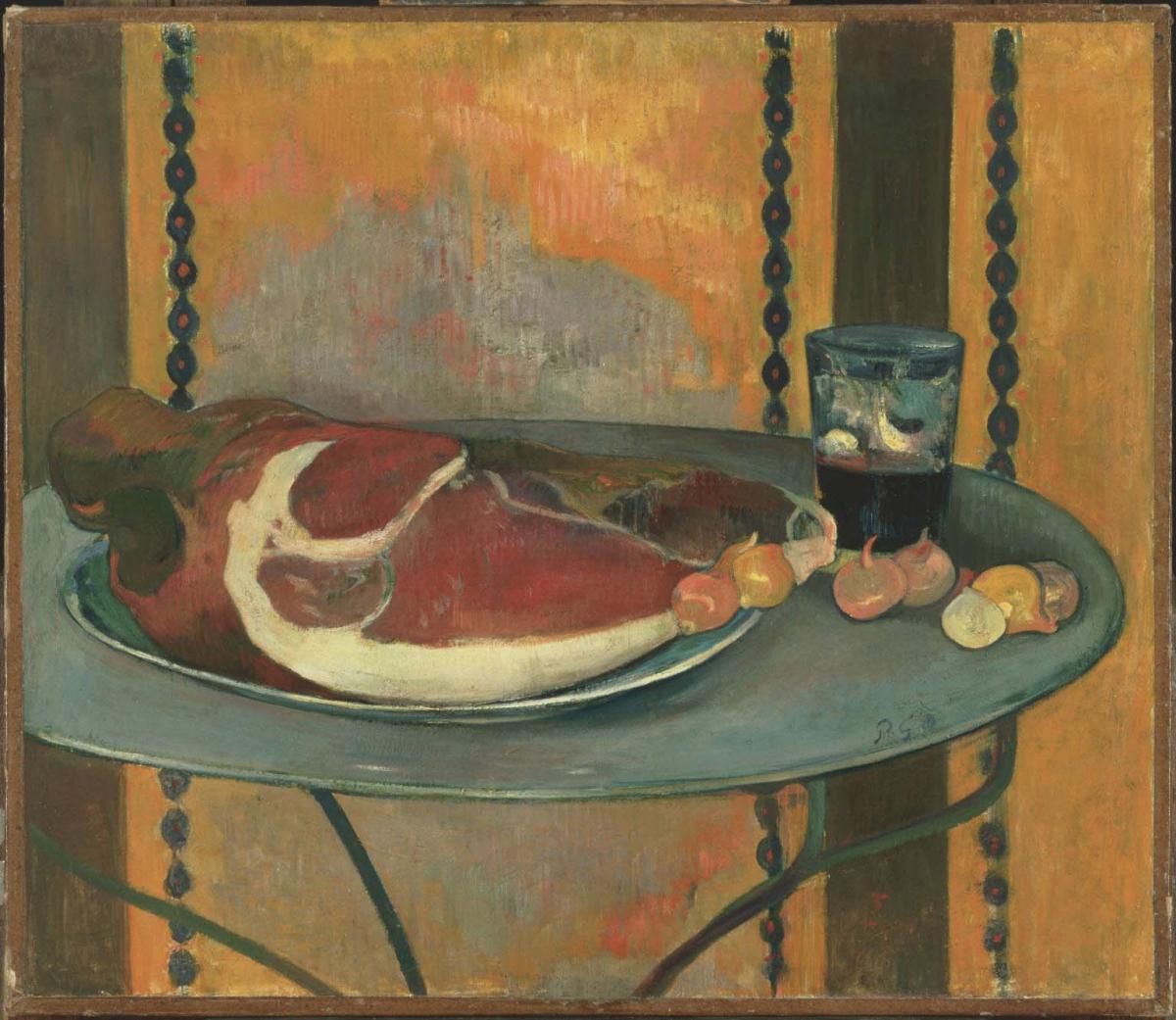The Ham
Paul Gauguin ( 1889 )

The strength of The Ham’s composition depends on a tension generated between decorative flatness and implied space. The repeating curves in the composition—in the onions, the crescents of the chainlike design in the background, the oval sweep of the ham, the platter, and the undulating legs of the table—contrast with the alternating vertical stripes of the background.
Paul Gauguin’s growing concern for plasticity in his forms stemmed partially from Paul Cézanne’s example, to which he increasingly turned in 1889. He had admired Cézanne early on, painting with him and Camille Pissarro in 1881, and when commencing a still life he was reported to have said, “Let’s do a Cézanne.” An avid collector of Cézanne’s work, he was especially fond of Still Life with Fruit Bowl, Glass and Apples, ca. 1879-82, which he kept with him until financial considerations forced him to sell it in 1898. In The Ham, the highlights and contours of the onions, especially the choice of deep blue to outline them, offer close comparison to Cézanne’s vigorously modeled apples. When The Ham was purchased by Duncan Phillips, he commented that it bore “such a resemblance to the collection and is so much needed as a source of subsequent painting.”